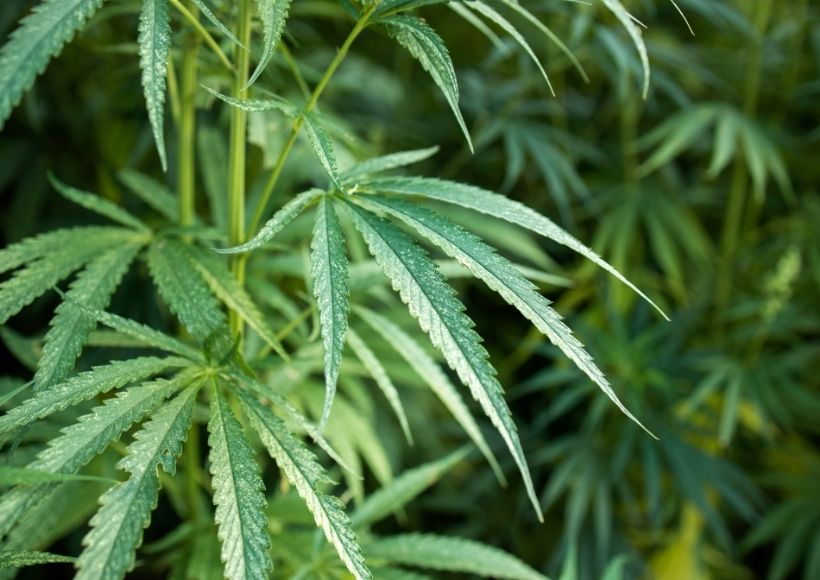Paper, textile, rope, oil, proteins, insulation, bio fuel, concrete blocks… hemp is a plant of unique versatility in the vegetable kingdom. Is it a discovery? Not really … Although it has been widely exploited all over the world since time immemorial, its culture was strongly threatened in the West in the 1940s and 1950s. This little-known history is extremely political. From now on, more and more small companies are embarking on the adventure, arguing potentially very interesting industrial outlets.
Hemp fiber has been used for more than 10,000 years in the manufacture of clothes. Before the 1930s, almost every European and American peasant cultivated a small plot of it. This plant ideally complemented the other activities of the farm: its seeds are edible and produce an oil with great nutritional virtues (perfectly balanced in omega 3 / omega 6 for the human body). After pressing, there is a very protein flour that can be used in cooking (just like the leaves). In many small villages, it was a lifesaving food supplement for a long time, despite its very pronounced taste.
Hemp lends itself well to crop rotation since its roots aerate the soil and impoverish very little. Once cut, the plant makes a very good green manure and does not need any pesticides, as it is very hardy and does not have many biological enemies. We also note that it has a purifying capacity for the soil (phytorehabilitation), since it chelates (captures) heavy metals. In old polluted industrial areas, sativa has already demonstrated its potential. In Puglia, Italian farmers surrounded the Ilva steel factory with hemp and thus succeeded in decontaminating the soil of certain heavy metals [1]. It is then enough to transform the plants loaded with pollutants into insulation material to “get rid” of them. Very interesting results have also been observed in areas polluted by radioactivity. In Chernobyl, the plant was used to neutralize cesium 137, strontium 90, and plutonium. Scientists from the University of New Jersey recommend it around Fukushima [2] .
Multiple Advantages For An Ecological Industrial Transition
Its fiber, the “bast”, which constitutes the outer layer of the rod, can be spun, braided to make fabric, or pounded and dried to make paper. The word “canvas” which designates the canvas of painting, for example, comes from cannabis . The vast majority of clothes, sheets, boat sails, etc. produced before the 20th century were made from hemp fiber. It is still today certainly the most interesting development axis in the context of a necessary ecological transition.
The yield of bast is quite impressive: 900 to 2700 kg per hectare, more than any other fiber plant. Based on its weight, a plant produces 10 to 100 times more usable fiber than trees or cotton. Moreover, cotton cultivation is one of the most polluting possible: while it covers only 2.5% of cultivated land in the world, it consumes 16% of the annual production of insecticide and ultimately produces 1 % of total anthropogenic greenhouse gas emissions (1 t-shirt = 35 kg of CO 2in the air). Its water needs are significant, even creating ecological disasters in certain cases (the drying up of the Aral Sea in particular). If cotton remains more pleasant to the touch than hemp fiber (in the current state of weaving technologies), we could nevertheless replace half of the world’s cotton production with hemp fiber. Indeed, not all clothes are intended to be extremely soft like jeans, caps, jackets, etc. The environmental impact of hemp cultivation being very minimal (see positive if exploited within the framework of a sustainable circular economy), the replacement of cotton would represent a great ecological advance.
How Hemp Became The Enemy Of Modern Capitalism.
Overall, at the current price of raw materials, a hectare of hemp is 3 times more profitable than a hectare of wheat. In view of the potential development of the sectors, demand could increase its price even more. So why has it disappeared from our fields in the West?
The history of the prohibition of hemp begins in the United States in 1937 with the affair of the firm Dupont. This company then developed a new synthetic fiber, nylon, which was to replace hemp fiber. To more easily eliminate competition from natural fiber, Dupont lobbies the government, which promulgates the Marijuana Tax Act .
But the hardest blow will come from the paper industry. William Hearst, magnate of the production of paper lumber and the press, uses the latter to sow panic in the American countryside. And capitalizing on the narcotic nature of the plant, it broadcasts shocking content (frightening titles, violent photos, alarmist polemics…) and at the same time invents the codes of the sensational press that we currently know. Even today in the United States, medical cannabis is licensed in 30 states (in 10 states for recreational use), but none for industrial use. A paradox which is enough to demonstrate that the narcotic nature of the plant is only a pretext.
Also Read : Cannabis Oil, Hemp Oil, And CBD Oil: What’s The Difference?

